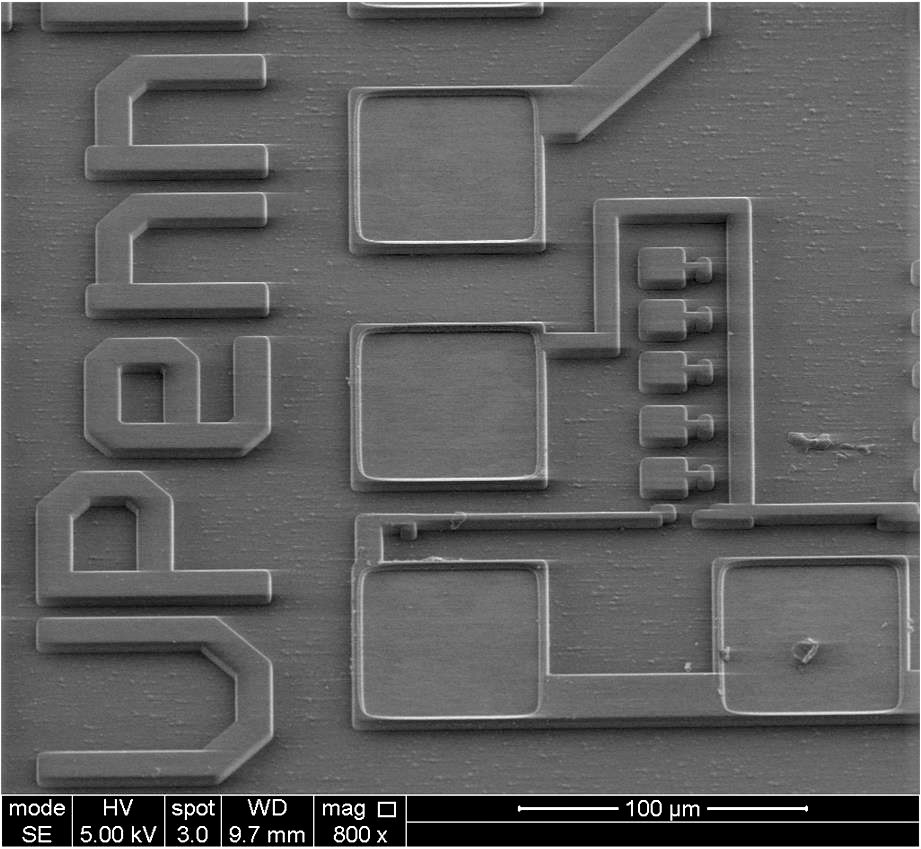The advancement of silicon electronic technology is slowing down as the field becomes more mature and the technology scaling approaches the quantum limit. However, there are many current and emerging impactful open areas of research such as quantum engineering assisted electronics, non-planar transistor based electronic systems, low power mm-wave and THz signal generation, processing, and imaging, AI assisted analog and RF systems, as well as analog and RF assisted AI systems. At the same time, the field of silicon electronics is rapidly becoming interdisciplinary to advance further.

ELECTRONIC PHOTONIC CO-DESIGN
For a given silicon electronic technology, the performance of the active and passive devices is mainly limited by the parasitic components (such as undesired capacitance and resistance) and the substrate loss. The active device level limitations make the signal generation and processing rather challenging at sub-mm-wave and THz regimes. Also, parasitic components of the active devices together with the limited quality factor of passive components make the design of low phase noise oscillators and efficient power amplifiers rather challenging. Additionally, the loss and limited bandwidth in the high-frequency electrical interconnects increase the power consumption of chip-to-chip or board-to-board data links significantly.
Quantum engineering and innovative new devices (such as non-planar active and passive devices) may overcome some of the active and passive device level challenges and are important and promising open areas of research. Moreover, the performance of some of the RF, mm-wave, and sub-mm-wave systems that are designed in silicon based technologies may be improved through the concept of electronic-photonic co-design. The low loss of the optical medium (such as waveguides), as well as the high bandwidth available in optical frequencies can be employed to improve the performance of an existing electronic system. Low-loss optical delays and high quality factor resonators available in the photonic integrated circuits can be used to perform optically assisted electrical signal processing. Due to the small size of these photonic resonators, the optically assisted electrical signal processing may be performed in a smaller area compared to an equivalent all-electrical system. Similarly, use of sophisticated analog, RF, mm-wave, and sub-mm-wave architectures in addition to near-zero incremental cost of transistors in high node technologies can improve the performance of photonic systems. Examples are RF assisted phase noise reduction of semiconductor lasers and electronically controlled laser phased arrays. In the concept of electronic-photonic co-design, combining the advantages of devices, circuits, and architectures in both electronic and photonic domains can profoundly impact both fields resulting in advances in several areas such as communications, computation, signal processing, imaging, sensing, and bio-technology.
Under the ONR YIP program, we have demonstrated an integrated end-to-end photonic deep neural network (PDNN) chip that can perform image classification at a rate of nearly 1.8 billion-frames-per-second through direct processing of the optical waves impinging on the on-chip pixel array as they propagate through layers of neurons.
Under the DARPA photonic assisted integrated ultra-low phase noise clock (Pi-UPNC), we have implemented the first integrated nanophotonic phase noise filter, which can be placed after a low-cost laser to significantly suppress its phase noise independent of the light source. More than 4 orders-of-magnitude laser linewidth reduction using the hybrid integrated photonic phase noise filter has been achieved. As an example of photonic assisted electronics, we have implemented a photonic-assisted mm-wave phased array transmitters for direct fiber to mm-wave links, where an electronic-photonic transmitter chip utilizes optical heterodyning within an electronically controlled photonic network for mm-wave generation, beamforming, and steering. As another example of photonic assisted electronics, we have demonstrated the first single-chip nanophotonic microwave near-field imager, where the chip first up-converts the impinging microwave signals (pulses) to the optical domain and optically delays and processes the signal to form the near-field image of the target object. The implemented imager utilizes photonic delay lines with about 44 times smaller chip area compared to the equivalent state-of-the-art electrical delay lines and achieve more than 16 times lower propagation loss.
Under the DARPA DODOS program, we have developed a highly stable optical synthesizer with sub-Hz level resolution across 5THz range. Under this program, we have also demonstrated the first fully integrated Pound Drever Hall (PDH) laser stabilization system in CMOS.
Under DARPA MOABB program, we implemented 2D optical phased arrays with a record element pitch.
Under DARPA QuICC program we are working toward implementation of electronic-photonic Ising machines.
Under DARPA WARP program we are working on implementation of an integrated photonic-acoustic system for self-interference cancellation in full-duplex transceivers.





